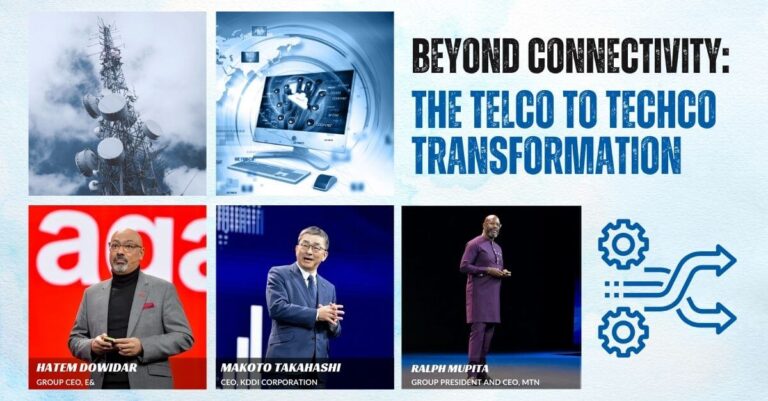Lack of Spectrum Threatens Europe’s 6G Future, Operators Warn
Twelve of Europe’s largest telecom providers have issued a joint open letter to EU regulators, urging them to allocate the entire upper 6GHz band (6.425–7.125 GHz) for mobile use. The group argues that without this critical mid-band spectrum, Europe risks falling behind global competitors—particularly the U.S. and China—in the race toward 6G development.
The call to action comes amid mounting concerns that current spectrum availability is insufficient to support both expanding 5G networks and the expected demands of next-generation 6G technologies.
Why the Upper 6GHz Band Matters
The upper 6GHz band is one of the last remaining large blocks of mid-band spectrum in Europe that has not yet been fully assigned. Mid-band spectrum is considered vital for mobile communications because it offers an effective balance between capacity and coverage. For 6G, which will need to support even higher speeds and denser connectivity, this frequency range is seen as a key enabler.
European nations have already auctioned much of the 3.4–3.8GHz range for early 5G rollouts. But as data consumption continues to surge and more devices come online, operators argue that those existing allocations will fall short in meeting the future needs of mobile networks.
Concerns Over Falling Behind the U.S. and China
The operators’ letter explicitly warns that the European Union’s delay in making decisions on upper 6GHz could leave the region behind in the global 6G competition. The U.S. opened the 6GHz band for unlicensed Wi-Fi use back in 2020. Meanwhile, China has already designated this band for both 5G and 6G services as of 2023.
By contrast, the EU has yet to finalize its position. The delay is causing concern among mobile operators, who see the risk of U.S. technology firms locking in further access to this spectrum, effectively sidelining Europe from critical next-gen wireless deployments.
“If the decision to make the upper 6GHz band available to European mobile operators is delayed, while U.S. technology interests are permitted to secure further 6GHz capacity, Europe’s competitiveness would be threatened,” the letter states.
US Stakeholder Influence a Growing Worry
A key point of friction raised in the letter is the ongoing push by U.S. interests to reserve the 6GHz spectrum primarily for Wi-Fi use. The European telcos argue that if regulators bow to this pressure, it could drastically limit the availability of suitable spectrum for mobile 6G services within Europe.
Such an outcome would not only hinder the rollout of 6G but could also impact the performance of existing 5G networks, which are expected to co-exist and evolve alongside 6G in the years to come.
Digital Leadership and Economic Impact at Stake
Beyond technical concerns, the operators stress that the decision carries broader implications for Europe’s digital sovereignty and economic future. As 6G is expected to power advanced technologies like AR, AI, IoT, and Edge-based services, the ability to shape standards and infrastructure will translate into global influence.
“Without the full availability of the upper 6GHz for mobile networks, any future 6G services in this band would be significantly curtailed and ultimately jeopardize Europe’s opportunity to play a leading role in 6G deployment,” the letter warns.
This concern is not just about mobile technology, but also about Europe’s place in the global tech ecosystem. Operators point to the risk of economic stagnation and a diminished voice in standard-setting forums if spectrum decisions don’t align with long-term 6G priorities.
EU Response in Progress
The EU’s Radio Spectrum Policy Group is currently preparing a draft opinion on the use of the 6GHz band, which is expected to be released for public consultation in June. The European Commission will ultimately decide on how to allocate the upper 6GHz spectrum based on this recommendation.
Telecom companies hope that by speaking out now, they can influence the direction of that policy and ensure that mobile networks are prioritized.
Industry Voices: Who Signed the Letter?
The letter was signed by a group of leading European operators, including:
- Vodafone (UK)
- Deutsche Telekom (Germany)
- Orange (France)
- TIM (Italy)
These companies collectively represent a large share of Europe’s mobile market, making their unified stance a strong signal to policymakers.
Looking Ahead: 6G Timeline and Development
While 6G is not expected to launch commercially before the 2030s, research and development efforts are already well underway globally. Industry and government initiatives are racing to define the standards, infrastructure, and technologies that will shape this next-generation wireless ecosystem.
To stay competitive, Europe needs to prepare today—starting with the foundational element of any wireless network: spectrum.
Conclusion: Spectrum Policy as a Strategic Imperative
European telecom leaders are urging regulators to act swiftly and decisively in assigning the upper 6GHz band to mobile use. Their message is clear: without timely access to this critical resource, Europe could lose its edge in the global 6G landscape.
The decisions made over the next few months will not only shape the future of 6G in Europe but also influence the region’s ability to maintain technological leadership, foster innovation, and secure its digital future.




















